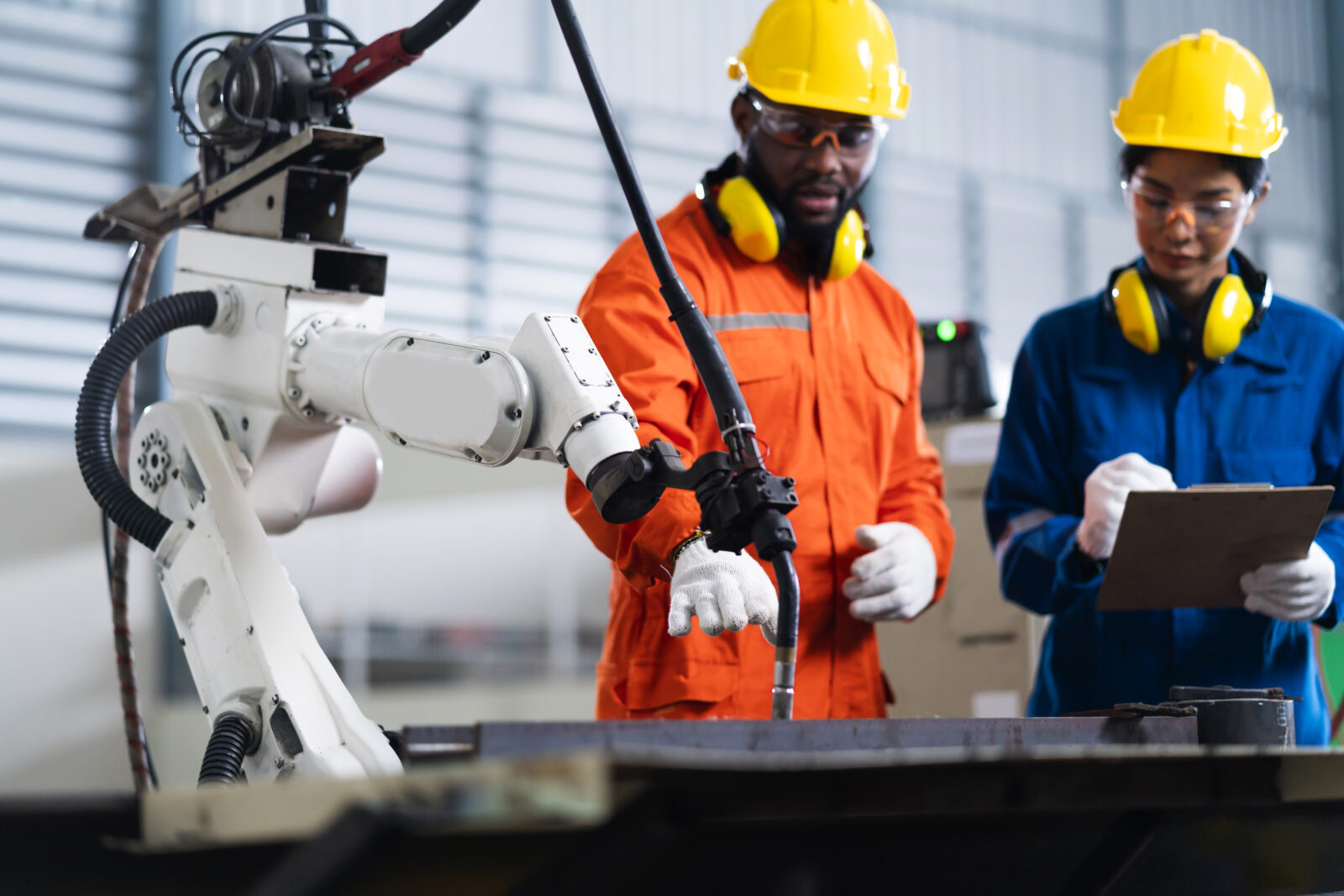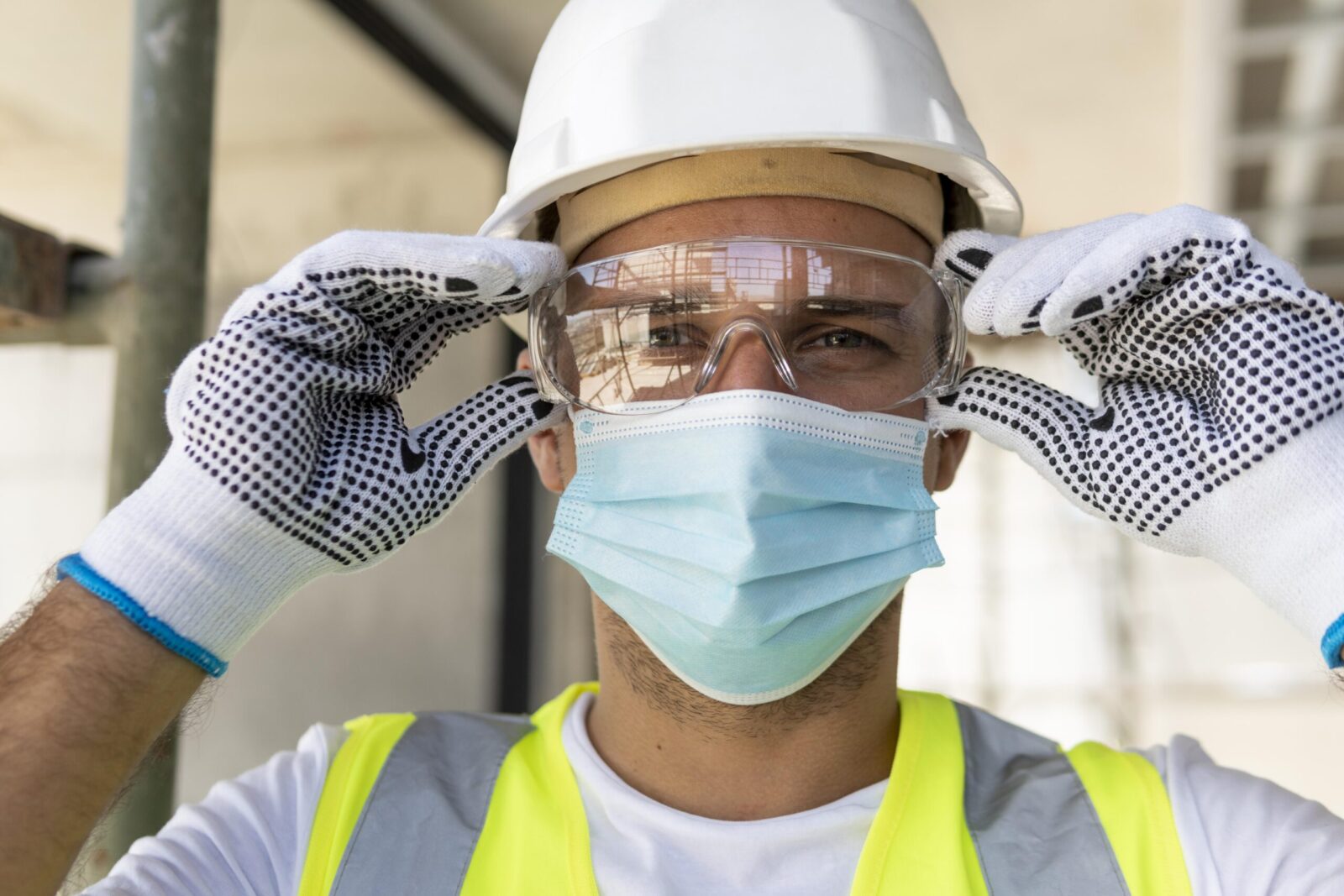
Essential PPE in the Food Industry: What You Need to Know
Overwhelmed by PPE options for food safety? Master your PPE selection for food workers safety with these practical tips.

Get 20€ off on your first order!
Manufacturing professionals face unique challenges that demand more from their work jacket than just durability. Balancing safety, comfort, and compliance requires careful consideration, but this guide provides everything you need to make an informed decision.
With years of expertise in heavy-duty workwear, we’ll help you identify the ideal work jacket for your needs while addressing related concerns, like maintenance and pairing with other gear.
Plus, we’ll guide you toward solutions for your next problem: keeping your workwear in top condition and optimized for performance.
For broader context, read our main article, “Work Jackets: Selecting the Right Outerwear.”
The material of your jacket determines its durability, safety, and comfort. Common options include:
Look for materials that are certified to meet European standards like EN ISO 11612 for heat and flame protection. These certifications ensure that your jacket offers verified protection. Learn more about EN Standards from this guide in Wikipedia.
Manufacturing tasks often involve constant movement, lifting, and bending. Choose a jacket with:
For a full range of sizing options, refer to the work jackets category on Droppe.
Manufacturing facilities may expose workers to outdoor conditions or fluctuating indoor temperatures. Consider jackets with:
Explore winter work jackets for cold-weather solutions.
Prioritizing safety in manufacturing settings promotes performance and confidence on the job. Look for features such as:
For specialized needs, such as welding, check out fire-retardant jackets.
Efficient manufacturing work often requires quick access to tools and essentials. Jackets with multiple, strategically placed pockets can boost productivity. Look for features like:

| Jacket Type | Best For | Key Features |
| Fire-Retardant Jackets | Welding, heat exposure | Certified for heat-safe work environments, durable fabrics |
| Insulated Jackets | Cold indoor/outdoor environments | Warm lining, windproof and waterproof options |
| Hi-Vis Jackets | Low-light or high-traffic facilities | Bright colors, reflective panels |
| Standard Work Jackets | General manufacturing tasks | Durable fabrics, ergonomic fit |
For more tailored guidance, refer to our related article, “Insulated vs. Non-Insulated Work Jackets: Which is Right for You?”
To maximize the lifespan of your work jacket:
For cleaning advice, check out our guide on “Caring for Your Work Jacket.”
A comprehensive workwear strategy enhances safety and productivity. Consider pairing your jacket with:
We hope this guide has provided clear and actionable insights for choosing the ideal work jacket for manufacturing by balancing safety, comfort, and functionality. With the right considerations, including material, ergonomics, and safety features, you can confidently select a jacket that enhances your performance in demanding environments. For a complete selection, explore our work jackets category.
Still building your perfect workwear kit? Discover how to compliment your choice with our guides on “How To Choose The Right Work Pants” and “Choosing The Right Safety Shoes”. We’re here to ensure you’re fully equipped for success.
For chemical resistance, look for certifications like EN 13034 or EN ISO 6529. These standards ensure the jacket provides adequate protection against chemical splashes or permeation, which is essential for work in facilities handling hazardous substances.
Yes, in high-humidity environments, consider jackets with moisture-wicking fabrics or breathable membranes like Gore-Tex. These features prevent overheating while maintaining waterproofing and comfort.
Check your company’s PPE (Personal Protective Equipment) guidelines for required certifications or features. Cross-reference these with the jacket’s specifications, such as EN standards for fire resistance or high visibility.
Yes, look for modular or multi-season jackets that come with removable liners or layers. These can be adapted for both cold and warm conditions, making them versatile for year-round use.
For minor damage, use repair kits with adhesive patches or specialized fabric glue designed for workwear. For extensive damage, consult the manufacturer for repair services or replacement recommendations to ensure safety features remain intact.
Thank you! You've signed up for our newsletter.



















Overwhelmed by PPE options for food safety? Master your PPE selection for food workers safety with these practical tips.

Struggling to maintain clear vision in demanding environments? This guide is here to help. By the end, you’ll know exactly...

Electricians across Europe face unique challenges that require reliable safety glasses to ensure both protection and efficiency. Whether safeguarding against...

Overwhelmed by PPE options for food safety? Master your PPE selection for food workers safety with these practical tips.

Struggling to maintain clear vision in demanding environments? This guide is here to help. By the end, you’ll know exactly...

Electricians across Europe face unique challenges that require reliable safety glasses to ensure both protection and efficiency. Whether safeguarding against...
Get 20€ off on your first order!
Save 30% by buying directly from brands, and get an extra 10€ off orders over €100
Save 30% by buying directly form brands, and get an extra 10€ off orders over €100